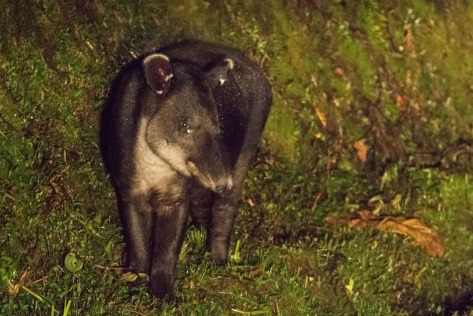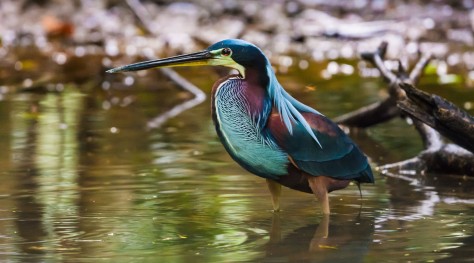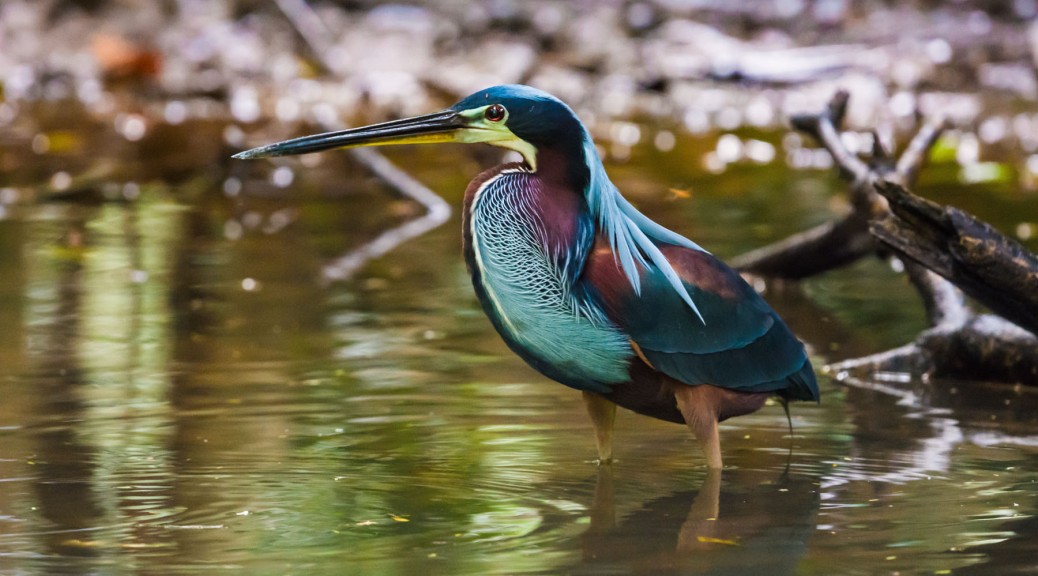There is a lot of wildlife in the Central American jungles that we rarely see because it is nocturnal, extremely shy, or inhabits hard to reach places. In the last two weeks I was lucky to come across both, a hard to see bird and a hard to see mammal…
The Agami Heron lives on shallow borders of lowland jungle ponds and slow streams that have a lot of overhanging vegetation. If you have been to the Costa Rican jungles you will then know that this describes an extremely dark and humid habitat… and dark and humid it was the late afternoon when I got to see it!
The largest mammal in Central America, Baird’s Tapir can live in far more habitats, from sea level all the way to an altitude of 3600 m (12 000 ft). They also spend their time in thick jungles and only come out to clearings at night. Hunting and habitat loss are the main reasons they avoid human contact and only recently some Tapirs have regained back confidence in us humans and walk along dark roads at night… exactly where our paths crossed!



Well, were it not for the high sensitivity of modern cameras, this post would be just a fisherman’s tale!

Looks amazing
LikeLiked by 1 person
Thanks! A pretty bird and an impressive mammal they are.
LikeLiked by 1 person
Fantastic shots and post, Eduardo.
LikeLiked by 1 person
Thanks! Coming across exciting wildlife is always unforgettable.
LikeLiked by 1 person
I agree, Eduardo. I recently was out with my camera, when a night heron flew flew directly in front of me. Luckily, I had the camera at the ready as I had been shooting owls not far away. An absolutely amazing experience.
LikeLiked by 1 person
I love your heron picture. There is a heron coming to a lake near my place sometimes and I´m obsessed with it. Unfortunately, it is, like yours, very shy, so I don´t get many opportunities to take pictures.
LikeLiked by 1 person
I have seen other heron species in different places, and they are shy in some and tame in others. Hopefully luck will favor you!
Thanks for your comments!
LikeLiked by 1 person
Reblogged this on From 1 Blogger 2 Another.
LikeLiked by 1 person